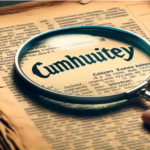Introduction
Have you ever found yourself in a situation where everything seems to spiral out of control? Conversations veer off track, emotions run high, and suddenly you’re caught up in what feels like a never-ending drama. Welcome to the world of derailment drama—a phenomenon that can disrupt workplaces, friendships, and even families. It creeps into our lives when we least expect it and often leaves chaos in its wake.
Understanding derailment drama is crucial for maintaining your sanity and peace of mind. This blog will explore how to recognize this behavior, identify common triggers, and equip you with practical strategies to navigate these turbulent waters. Whether you’re dealing with an individual who thrives on conflict or just want to steer clear of unnecessary tensions, we’ve got you covered. Let’s dive into the dark side of derailment drama together!
What is Derailment Drama?
Derailment drama refers to the chaotic situations that arise when conversations or interactions take unexpected, negative turns. It often involves individuals reacting emotionally rather than rationally, leading discussions off course and creating tension.
At its core, derailment drama disrupts effective communication. Instead of addressing issues calmly, participants may engage in blame-shifting or personal attacks. This behavior can escalate quickly, pulling everyone into a whirlwind of conflict.
It often manifests in group settings—think team meetings where one person’s grievances overshadow the agenda. However, it can also occur in personal relationships without warning.
The result? A toxic environment full of misunderstandings and hurt feelings. Recognizing this phenomenon is the first step toward preventing it from affecting your life and interactions with others. Understanding derailment drama empowers you to navigate social dynamics more effectively and maintain healthier relationships.
The Negative Effects of Derailment Drama
Derailment drama can wreak havoc on personal and professional relationships. It often leads to misunderstandings, broken trust, and emotional exhaustion. Those involved may feel drained, constantly navigating the turbulent waters of conflict.
The environment becomes toxic when derailment drama escalates. Productivity dips as focus shifts from tasks to managing interpersonal chaos. This distraction affects not only individuals but entire teams or families.
Moreover, constant exposure to such negativity takes a toll on mental health. Anxiety and stress levels rise as individuals brace themselves for the next outburst or crisis.
In social circles, derailment drama can create rifts that lead to isolation. Friends may choose sides or withdraw altogether, leaving those embroiled in the conflict feeling lonely and unsupported.
Recognizing these negative effects is crucial for anyone looking to maintain their peace of mind amidst turmoil.
Common Triggers for Derailment Drama
Derailment drama often springs from seemingly innocuous situations. Stressful environments can act as catalysts, pushing individuals to react impulsively. When tensions rise, misunderstandings escalate quickly.
Personal conflicts are another major trigger. Unresolved issues between colleagues or friends often surface unexpectedly. These altercations can lead to emotional outbursts and disruptions.
Social dynamics also play a role. A group’s influence can encourage gossip or exclusionary behaviors, amplifying feelings of insecurity among members. This creates an atmosphere ripe for derailment drama.
External pressures such as deadlines or competitive settings may push people over the edge. As stress mounts, patience wanes, leading to explosive reactions that derail productivity and harmony within a team or relationship. Recognizing these triggers is essential for prevention strategies in any environment where interaction occurs frequently.
How to Identify and Avoid Being Involved in Derailment Drama
To steer clear of derailment drama, first pay attention to your surroundings. Observe the dynamics within your group or workplace. Are conversations frequently filled with gossip or negativity? This might be a red flag.
Trust your gut feelings. If something feels off in a situation or conversation, it often is. Distance yourself from individuals who thrive on chaos.
Set clear intentions for your interactions. Aim for constructive dialogue and stay focused on positive outcomes. Keep an eye out for those who deflect responsibility onto others; they are likely contributors to this harmful cycle.
Develop strong communication skills as well. Assertively express when you feel uncomfortable with discussions that veer into derailment territory.
Practice self-awareness regularly. Reflecting on how you respond can help you identify triggers and minimize involvement in such dramas before they unfold.
Tips for Dealing with Individuals Who Cause Derailment Drama
Dealing with individuals who thrive on derailment drama can be challenging. The first step is to remain calm. Don’t let their energy pull you into chaotic exchanges.
Set clear communication boundaries. Let them know when their behavior becomes overwhelming or unproductive. This establishes a sense of control over your interactions.
Another effective strategy is to redirect the conversation. Shift focus to solutions rather than fueling the drama with gossip or negativity.
Be mindful of your reactions. Responding emotionally can escalate situations further, so practice deep breathing techniques before engaging.
If necessary, limit your exposure to these individuals. Protecting your mental space should always come first, and sometimes distance helps eliminate unnecessary stress.
Remember that it’s okay not to engage in every conversation they initiate about conflict or tension; choosing silence can speak volumes too.
The Importance of Setting Boundaries to Avoid Derailment Drama
Setting boundaries is essential when it comes to avoiding derailment drama. Clear limits help define acceptable behavior and protect your emotional well-being.
When you communicate your needs, people are more likely to respect them. This can prevent misunderstandings that lead to unnecessary conflict.
Boundaries also create a space for healthy relationships. They allow both parties to express themselves without fear of drama spiraling out of control.
It’s important to remember that saying “no” is not selfish; it’s self-care. By prioritizing your mental health, you reduce the chances of getting caught up in toxic situations.
Establishing boundaries fosters accountability as well. When everyone knows where they stand, there’s less room for manipulation or confusion.
In the end, strong boundaries act as a shield against derailment drama, allowing you to navigate relationships with clarity and confidence.
Conclusion
Derailment drama can take a toll on our emotional and mental well-being. Understanding what it is, recognizing its negative effects, and identifying common triggers are crucial steps in steering clear of these situations. By being aware of the behaviors that lead to derailment drama, individuals can find ways to avoid getting caught up in unnecessary chaos.
Setting boundaries is essential for protecting ourselves from the toxicity that often accompanies this type of conflict. It’s equally important to develop strategies for interacting with those who may create turmoil around us. By fostering healthy communication and cultivating self-awareness, we can navigate social dynamics more effectively.
By taking proactive measures against derailment drama, we empower ourselves to maintain healthier relationships and enhance our overall quality of life. The journey toward a more peaceful existence starts with understanding how to manage the conflicts that arise around us—both within ourselves and among others.




















